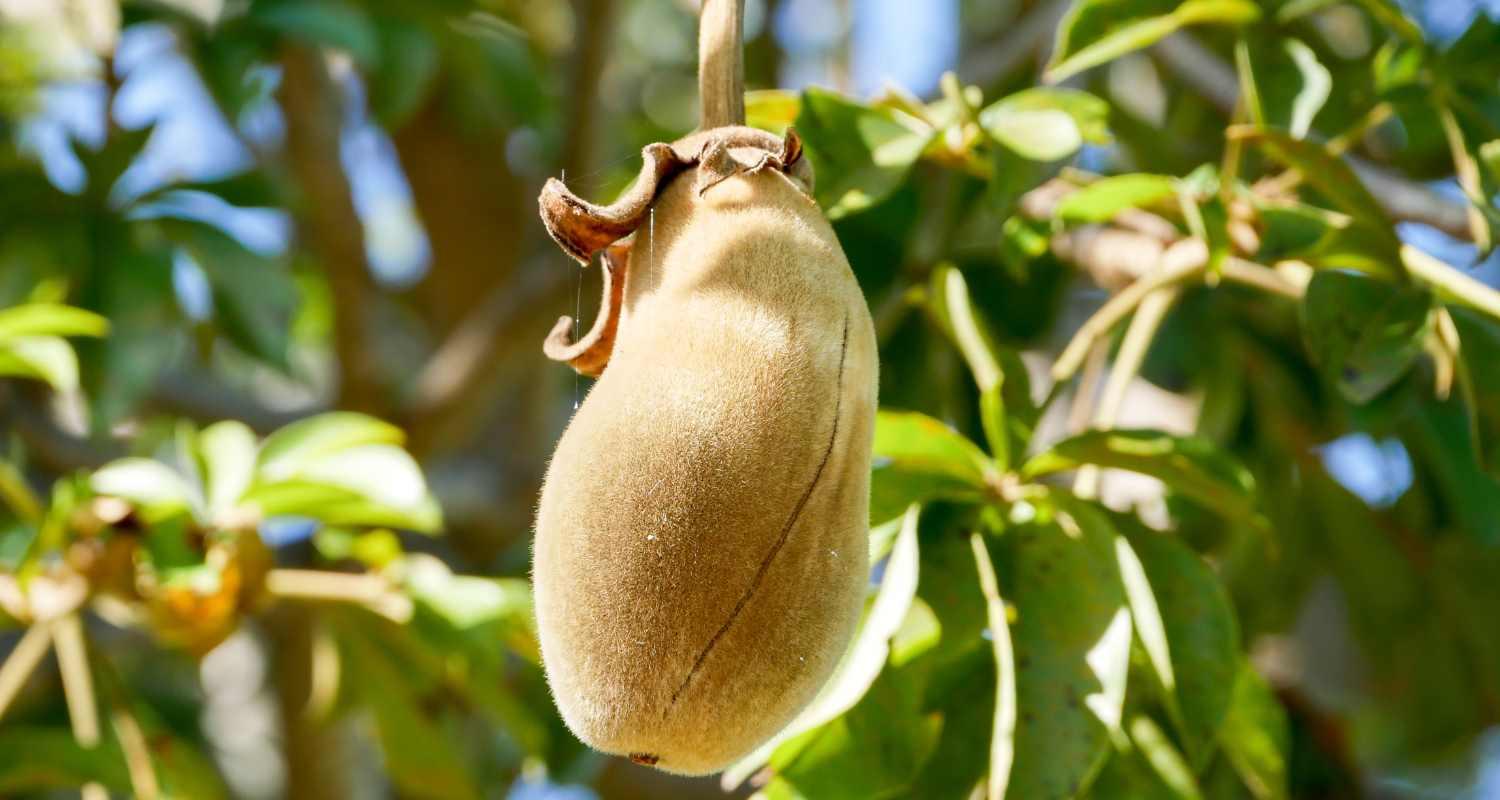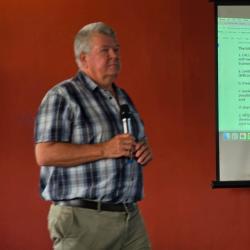
SA’s new biodiversity strategy is a key move away from colonial fortress conservation
Gail Thomson, Rodgers Lubilo, Steve Johnson, Amy Dickman, Michael 't Sas-Rolfes, Chris Brown, Malan Lindeque, Craig Bruce, Francis Vorhies, Keith Madders, Brian Child, Shylock Muyengwa and Sue Snyman
If you have ever paid entry fees to a national park, paid to watch a wildlife documentary, stayed in a private game reserve, bought game meat for the braai or an indigenous plant for the garden, you have contributed to ‘monetising’ South Africa’s biodiversity.
It was disappointing to read an article in Daily Maverick that sought to “ring alarm bells” about a plan by the Department of Forestry, Fisheries and the Environment (DFFE) to expand and strengthen the national biodiversity economy.
Having examined the strategy carefully, we found that, rather than being alarming, this is a promising plan that could take South Africa’s conservation efforts a giant step forward.
The opposition to this farsighted strategy document seems to be grounded in personal distaste for the idea of “monetising South Africa’s wildlife”.
If you have ever paid entry fees to a national park, paid to watch a wildlife documentary, stayed in a private game reserve, bought game meat for the braai, or an indigenous plant for the garden, then you have contributed to “monetising” South Africa’s biodiversity.
If you have the privilege of owning or working for a tourism operation or wildlife filmmaking company, you are definitely monetising biodiversity.
Conservation simply cannot happen without money. National parks with tiny budgets do not function properly – they need money. Outside the parks, farmers use their land to support their families and businesses, which cannot be done without money.
Meanwhile, high levels of poverty alongside policies and practices that exclude people from using wildlife legally create fertile grounds for poaching. Turning this situation around requires improving livelihoods (ie, money) and linking them closely with biodiversity conservation.
Putting the new strategy into its historical context
The approach outlined in the proposed strategy is nothing new. South Africa has taken an economic approach to wildlife conservation since the 1970s, having realised the futility of forcing farmers to conserve animals that they did not own.
The legislation changes in each province at that time granted wildlife ownership rights to landowners, who have since developed a thriving, diverse wildlife-based industry on private lands. The contribution of private lands to the conservation of rhino and many other species outside protected areas is testament to the success of this approach.
Notwithstanding several major achievements in terms of increasing the geographic range and population numbers of many species, South Africa’s approach has two key weaknesses:
- The majority of rural Africans have been excluded, particularly those living in communal areas with no secure land tenure and therefore no legal ownership over wildlife; and
- On private land, wildlife ranching activities have become increasingly intensified; captive lion breeding is one symptom of this weakness.
The proposed National Biodiversity Economy Strategy (NBES) builds on the historical success of the economic approach, while finding ways to address its main weaknesses. It follows similar plans released in the past few years, including a white paper on the Conservation and Sustainable Use of South Africa’s Biodiversity and the Game Meat Strategy, both released for public comment in 2022.
This strategy and the other two publications align closely with similar frameworks and strategies adopted by the Southern African Development Community (SADC).
Promoting community conservation in the wildlife sector
From our point of view, the most encouraging aspect of the plan is its focus on inclusivity and bringing hitherto excluded rural communities into the biodiversity economy.
The plan will allow communities to capitalise on the current value of indigenous plant products and associated indigenous knowledge, while potentially expanding into wildlife ranching, tourism and commercial fisheries.
These multiple potential revenue streams increase the overall resilience of wildlife-based land uses, as the markets for each of these resources are likely to fluctuate over time.
The plan thus aligns well with the community-based natural resource management (CBNRM) programmes that were established in Zimbabwe, Botswana, Namibia and Zambia in the 1980s and 1990s. CBNRM in these countries now covers an estimated 450,000km2 and involves at least eight million people.
While CBNRM has achieved good results for many communities in these countries, much has been learnt about community governance structures, benefit-sharing plans and monitoring procedures over the past few decades that can be used to further improve these programmes.
South Africa would do well to send a delegation of technical staff to learn about CBNRM and find ways to adapt these lessons to the South African context in order to implement the community aspects of the NBES.
Indeed, with a focus on a broad range of natural resources and service industries beyond tourism and hunting, South Africa could use the NBES to leapfrog other countries by taking a more holistic and diverse approach to CBNRM than existing programmes in the region.
Encouraging more extensive landscape-level conservation
The strategy aims to address the second weakness in the South African conservation model by encouraging landscape-level conservation that includes communal, private and state land (particularly protected areas).
The first practical steps in this direction outlined in the strategy include developing partnerships and creating economic links among the different land users. Examples of these partnerships include private landowners providing excess game animals to community areas, or national parks promoting cultural tourism activities offered by neighbouring communities.
While it may take many years before fences start coming down and ecological connectivity is restored among these different land types, having a common biodiversity economy is a key step forward.
This could mark the start of a transition away from colonial “fences and fines” or “fortress” conservation and towards more cooperative and integrated conservation measures in South Africa.
With the right incentives in place for a more extensive conservation landscape, the prevalence of intensive wildlife breeding – including captive lion breeding – is likely to decline, as farmers find more value in creating and maintaining larger conservation areas than in confining animals to highly managed fenced areas.
For private farmers, this could mean lower security and management costs.
For communities, it could mean better livelihoods and job opportunities in the wildlife sector that revive traditional ways of life and tap into their indigenous knowledge.
For the state, it could mean reduced security costs for national parks, reaching global and national biodiversity targets, while simultaneously developing the national economy.
Fulfilling South Africa’s commitments to global biodiversity targets
One of the key targets the DFFE has in mind is the Kunming-Montreal Global Biodiversity Framework “30 by 30” target. This target aims to conserve 30% of the land and sea by 2030, which is impossible to achieve by only increasing the size of state protected areas and thus expanding the “fortress” used to protect wildlife.
The other recognised option for achieving this target is by establishing “other effective area-based conservation measures”. These include sustainable use of wild species and respecting the rights of indigenous peoples and local communities over their traditional territories.
The key point is that productive landscapes that are managed primarily for the benefit of the people who own them or live on them can and do have positive effects on biodiversity.
Many private game ranches in South Africa implement area-based conservation measures such as reintroducing wildlife and rewilding habitat. The new strategy will promote such measures on both communal and private lands, thus reaching or exceeding the 30 by 30 target in a way that allows both people and nature to benefit.
Why we support the strategy, and why you should too
Creating and strengthening the link between biodiversity conservation and improved livelihoods is what this strategy is all about. This plan is neither underhanded nor out of line with the rights of all South Africans.
On the contrary, it is grounded in Section 24(iii) of the Constitution, which requires “reasonable legislative and other measures… that secure ecologically sustainable development and use of natural resources while promoting justifiable economic and social development.”
We therefore encourage everyone who wants more wildlife, more land for biodiversity conservation, and a more equitable society to show their support for this strategy by submitting comments within the recently extended period.
As people with many years of experience working on environmental matters and community conservation in the SADC region, we stand ready to support the South African government and rural communities to make this plan a reality.
Originally published in Daily Maverick on 24 Mar 2024
Gail Christine Thomson, Resource Africa and Namibian Chamber of Environment; Dr Rodgers Lubilo, Community Leaders Network of Southern Africa; Steve Johnson, Growth Leaders; Professor Amy Dickman, Lion Landscapes (Tanzania) and Wildlife Conservation Research Unit, Oxford University; Dr Michael t’Sas-Rolfes, African Wildlife Economy Institute, Stellenbosch University and Interdisciplinary Centre for Conservation Science, Oxford University; Dr Chris Brown, Namibian Chamber of Environment; Dr Malan Lindeque, Green Economy Trust; Craig Bruce, Jamma International; Dr Francis Vorhies, African Wildlife Economy Institute, Stellenbosch University; Keith Madders, Resource Africa; Professor Brian Child, University of Florida; Dr Shylock Muyengwa, Resource Africa; and Dr Sue Snyman, School of Wildlife Conservation, African Leadership University, Rwanda.
-

Dr Michael 't Sas-Rolfes
Research Associate -

-

Prof Francis Vorhies
Director & Professor Extraordinary -
Gail Thompson
We support the free flow of information. Please share:
More content
-

Legal wildlife trade can and does finance conservation
Prof Francis VorhiesThe theme of World Wildlife Day on 3 March 2025 is “Wildlife Conservation Finance: Investing in people and planet.” This…
Articles -

Comments on the Draft National Elephant Heritage Strategy in South Africa
Prof Francis VorhiesComments on the Draft National Elephant Heritage Strategy in South Africa Prepared by the African Wildlife Economy Institute...
2025Briefs -

Business-driven approach to wildlife conservation Finance
Dr Wiseman NdlovuWorld Wildlife Day 2025 is themed “Wildlife Conservation Finance: Investing in People and Planet,” proposes that it’s time…
Articles -

What Foot and Mouth Disease-free means for South Africa’s game meat trade
Ms Lydia Daring Bhebe…Explore the latest developments in South African provinces achieving and maintaining Foot and Mouth Disease (FMD) free status…
Articles -

The world wildlife trade regulator is 50 – here’s what has worked and what needs to change
Daniel Challender…Most countries implement Cites, the Convention on International Trade in Endangered Species of Wild Fauna and Flora as…Articles -

Enabling Sustainable Wildlife Trade
Prof Francis VorhiesEnabling sustainable wildlife trade is a key policy measure for growing Africa's wildlife economy. In this respect, CITES…
Articles -

Has CITES become too complicated to be effective?
Prof Francis VorhiesGovernments agreed to the text of CITES in the 1970s, which is quite straightforward. However, the agreement’s implementation…
Articles -

From poachers to providers: Can Africa's wild meat market save wildlife?
Dr Wiseman NdlovuHave you ever considered how wild meat could be more than just a cultural staple but also a…
Articles -

3rd Multi-Stakeholder Forum on the Greater Addo-Amathole Biodiversity Economy Node
Ms Klarine SchutteAs a fellow of the African Wildlife Economy Institute (AWEI), I am excited to attend the upcoming 3rd…
Articles
Get updates by email
Through impactful research, stakeholder engagement, and professional development, AWEI is supporting the wildlife economy across Africa. Please subscribe for occasional updates on our work and forthcoming events.
Sign up for a quarterly dose of AWEI insights
In a complex and changing world, AWEI generates strategic ideas, conducts independent analysis on wildlife economies, and collaborates with global scholar-practitioners to provide training and expertise for biodiversity conservation, climate resilience, and inclusive economic opportunities in Africa.
